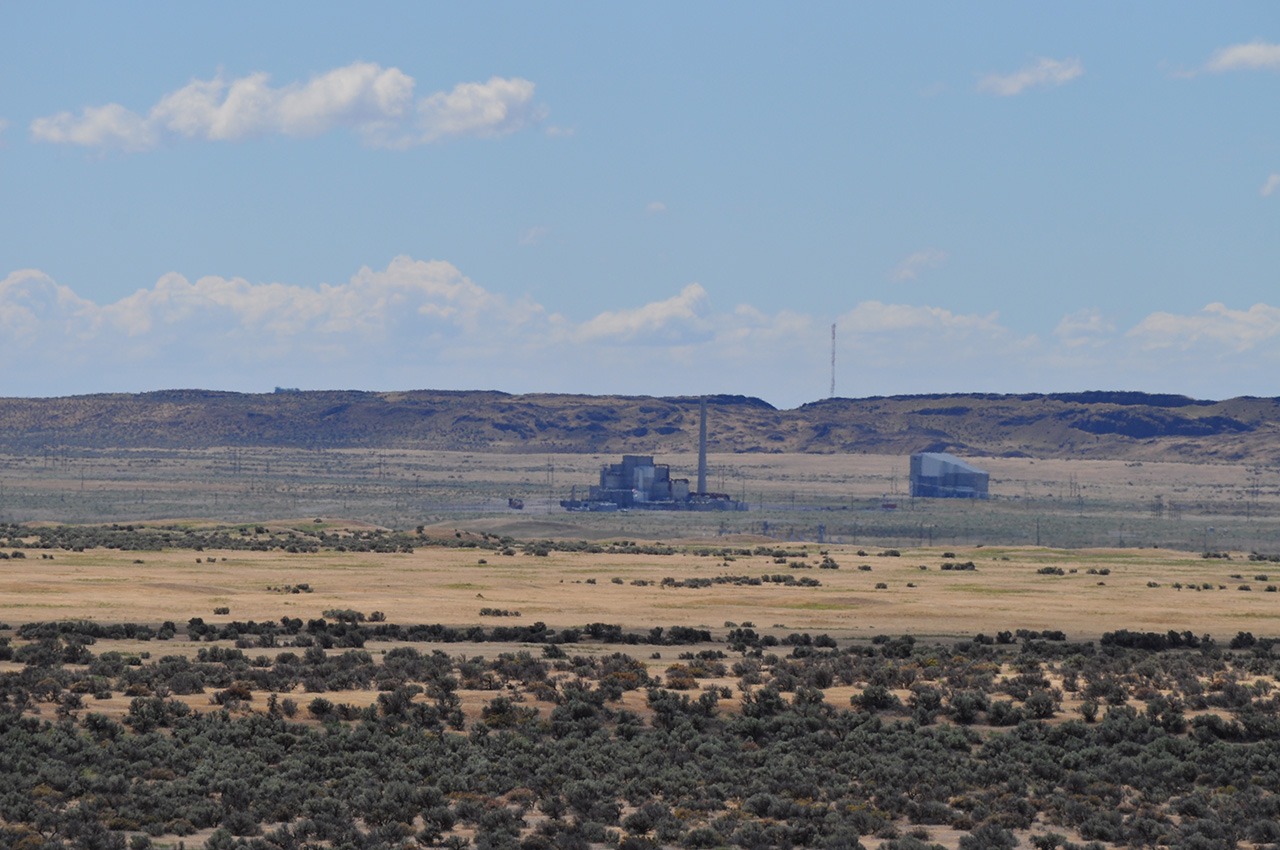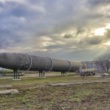With its $1.2 trillion price tag for the modernization of the U.S. nuclear weapons arsenal and production complex, the U.S. Congressional Budget Office has induced “sticker shock” on Capitol Hill. Yet despite this enormous projected cost for rebuilding the U.S. triad of land, submarine, and bomber nuclear forces, the CBO has in fact lowballed its estimate by excluding the costs for environmental restoration and waste management of the Energy Department’s nuclear weapons complex.
Even though the cleanup of nuclear weapons sites comes from the same congressional spending account as DOE nuclear weapons modernization, the CBO chose to exclude an additional $541 billion in legacy costs. If these costs are included, the total price tag goes to $1.74 trillion over three decades.
The largest of these cleanup costs, at $179.5 billion, is attributed to the stabilization and disposal of high-level radioactive wastes generated from the production of plutonium. The U.S. Government Accountability Office (GAO) informed Congress in 2013 that these wastes are “considered one of the most hazardous substances on earth.”
About 100 million gallons are stored in 227 underground tanks, many larger than state capitol domes and ranging in age from 43 to 73 years. Over 1 million gallons of these contaminants have leaked at the DOE’s Hanford site in Washington state, threatening the Columbia River.
The removal and stabilization of these wastes at Hanford by mixing them with molten glass, at an estimated cost of as much as $72.3 billion, represents the single largest, most expensive, and potentially riskiest nuclear cleanup project ever undertaken by the United States. It’s roughly comparable to the Apollo moon program in cost and risk, except there’s no moon.
Even without factoring in cleanup, an analysis of the DOE costs for the nuclear warheads program shows that while the U.S. nuclear weapons stockpile has shrunk by 56 percent since 2003, the annual per-warhead cost has increased by about 422 percent. This huge cost growth in the nuclear stockpile budget is largely due to ever-growing overhead expenses for abandoned and antiquated structures not formally part of the DOE cleanup program. Many of these facilities contain hazardous materials and have been ignored for several decades.
To keep the lights on, the DOE weapons complex must pay for things like collapses, flooding, fires, and preventing roofs from falling in. In 2015, the DOE Inspector General warned that, “delays in the cleanup and disposition of contaminated excess facilities expose the Department, its employees, and the public to ever-increasing levels of risk [and] lead to escalating disposition costs.”
The Y-12 National Security Complex in Oak Ridge, Tennessee, for instance, has a high-risk “footprint” of abandoned contaminated structures, mostly built in the 1940s, that is 2.5 times larger than the Pentagon building. Although Y-12 has not produced weapons for more than 25 years, its annual budgets have increased by nearly 50 percent since 1997, to more than $1 billion a year.
Over the past 20 years, there have been dozens of fires and explosions at Y-12 involving electrical equipment, glove boxes, pumps, waste containers, and nuclear and hazardous chemicals. Several of these incidents resulted in worker injuries and destruction of property.
As late as September of this year, unstable amounts of highly enriched uranium, called “material at risk” have spontaneously combusted. For more than 20 years, Y-12 has not been able to stabilize its backlog of “materials at risk.”
In a December 2016 DOE report to Congress, the unaccounted-for liability of getting rid of 2,349 of the DOE’s abandoned facilities over the next 10 years was roughly estimated at $32 billion. The DOE finds that among those are 203 unattended “high-risk” facilities and estimates a cost of $11.6 billion to close them down safely.
The most recent high-profile examples of aging-infrastructure risks include the collapse, last May, of a section of tunnel at the Plutonium and Uranium Extraction Facility, known as PUREX, a long-idle component of the sprawling Hanford nuclear site, 200 miles east of Seattle. The tunnel holds an enormous amount of radioactive wastes, and hundreds of workers were forced to seek cover.
And in June of this year, during the process of tearing down a building that was known to contain countless respirable plutonium particles, 31 workers inhaled or ingested plutonium during a work shift, after failing to take necessary precautions. It took four months for the DOE’s contractor to inform the public about the mishap and to tell the workers about their doses.
It took four months for the DOE’s contractor to inform the public about the mishap and to tell the workers about their doses.
The costs for the disposition of excess plutonium from the nuclear weapons programs is pegged by GAO at $56 billion. In 2012, the U.S. Government determined that it no longer needed 43.4 metric tons of plutonium for military needs.
The majority of that plutonium is stored in facilities at the DOE’s Pantex Plant near Amarillo, Texas, that were built in the 1940s. The plutonium is densely packed in special containers that are only meant for “interim” storage.
In 2010 and 2017, unexpected 2,000-year rains flooded a major plutonium storage area with several inches of water, which shut down the plant and impacted about 1,000 containers at a cost of hundreds of millions of dollars in recovery funds.
Because plutonium weapon components can become dangerous if mishandled or improperly stored, a Pantex worker told me, while I was working for the DOE’s Secretary, that it was like “having a zoo full of wild animals.”
Because the plutonium disposition program is way over budget and is stalled without a credible path forward, tens of tons of plutonium are likely to remain in these 70-plus-year-old structures awaiting further floods and additional threats to their safety and integrity.
While an ever-growing amount of plutonium will be stored in antiquated structures at the Pantex plant, another 1,000 abandoned facilities will be added to the list of sites requiring specialized disposition over the coming decade. Costs for the disposal of large amounts of hazardous wastes in the abandoned structures are not included in the DOE’s 2016 estimate and are likely to add several billions of dollars more.
When the DOE cleanup program was created in 1990, Congress made sure that it would be paid for from the same pot of money designated for the U.S. arsenal of nuclear warheads. These legacy costs should not be isolated from estimates of the nation’s nuclear weapons budget.
The need to protect the safety and health of workers and the American public from the mess produced by the current and previous nuclear weapons stockpiles should not be ignored as we proceed to deal with the future of nuclear weapons in the 21st century. As former Senator John Glenn of Ohio, a staunch supporter of the Cold War, would often say, “What good is it to protect our nation with nuclear weapons if we poison our people in the process?”
A senior scholar at the Institute for Policy Studies, Robert Alvarez served as senior policy adviser to the Energy Department’s secretary and deputy assistant secretary for national security and the environment from 1993 to 1999. During this tenure, he coordinated the Energy Department’s nuclear material strategic planning and established the department’s first asset management program.






This analysis prepared by Robert Alvarez should be featured with front page headlines in mainstream media, as a landmark by an expert public advocate for public safety of undisputed technical qualifications. Department of Energy (DOE) cost estimates are grossly insufficient, and this article alerts readers and informed stakeholders of technical gaps, operational deficiencies, flawed assumptions and extreme calculation errors through omission, and ‘scope’ that DOE defined too narrowly.
Compliments to author Robert Alvarez, and deep gratitude for timely public notice.
US Taxpayers ought be thought of as shareholders and BOD members. With this type of “governance” in place it’s much more likely that wasteful expenditures with little impact on financial and medical health of the country will **not** be pursued.
Some say government should act more like corporations – so be it, go forward with strong by-laws favoring the economic and financial health of the nation. Let’s bring in the USGAO and Project on Government Oversight to help steer the dialog for accurate representation and ethical practices.